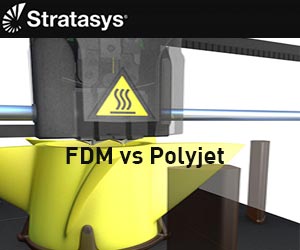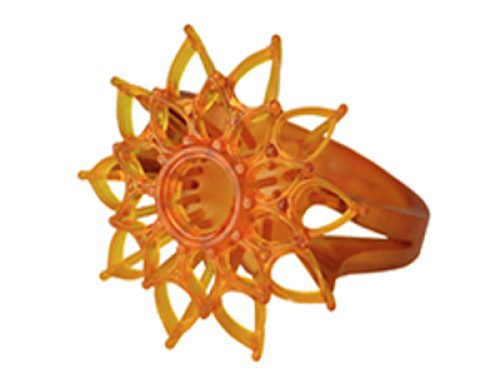There’s recently been a lot of news about FDM (Fused Deposition Modeling) and PolyJet 3D printing technologies. So, when entering the market for an additive manufacturing system, it’s beneficial to have a deeper understanding of the differences between the two technologies to select the 3D printer with the right set of capabilities for your business.
After all, each technology builds parts its own way and each provides a variety of attractive benefits and capabilities. Say that you can only choose one technology or that you need another 3D printer but are not sure if you need the same technology or an alternative. How do you sort it out? Today’s Check it Out takes you to a complimentary white paper that’s intended to help you research wisely.
The elevator speech on “FDM and PolyJet 3D Printing: Determining Which Technology is Right for Your Application” is that it compares FDM and PolyJet technologies using three criteria: operations, part characteristics and materials. It’s richly illustrated with figures, charts, graphs, screenshots and photos. It’s written for anyone with a basic understanding of 3D printing. It’s not an in-depth theoretical presentation. Every bit of it is a hands-on “what’s in it for you” document.
This seven-page white paper, written by Fred Fischer, the director of business development at Stratasys, begins with an extremely brief summary of the mechanics of FDM and PolyJet 3D printing technologies. It ends with a pair of excellent infographics that succeed at conveying a lot of data at a glance.
The first infographic sorts available materials by general application type, performance (durability, finish, details, etc.), part precision and properties. The second infographic will remind you of the data in Consumer Reports. It uses bullets to indicate where PolyJet and FDM technologies fall within three key considerations broken down into their constituent components, such as process time, accuracy and biocompatible materials.
In the main body of the paper, Fischer compares FDM and PolyJet technologies by dicing the three key criteria into their important considerations. Operations, as you might surmise, is the longest discussion. It embraces such concerns as overall build speed, pre- and post-processing, where you can position a 3D printer, ease of use and operating expenses.
Operations also has the most nuanced elements. Take build speed. Because of all the variables that go into making a part, it’s a tricky measure – like EPA mileage guidelines. In other words, sometimes when you run a stopwatch during every step that goes into 3D printing a part, the machine that took the longest time to build your part may have the fastest completion time.
The part characteristics segment ranges across such issues as finish, resolution, accuracy and size. In many ways, this section is close to a spec sheet. But it’s a tough nut to write about. Size, for example, defies easy generalization because of variations in different units. Nonetheless, this discussion will really help you hone in on the technology best for you if finish or part stability are your thing.
Arguably, materials are the biggest differentiator between FDM and PolyJet technology. Between the two, you have about 600 material options, including thermoplastic, thermoplastic-like resin, rigid or flexible materials and opaque and transparent materials. PolyJet alone offers more than 450 material blends for color, flexibility and so on.
One of the many bright spots in this paper is that Fischer just lays the pros and cons of FDM and PolyJet technology out on the table for you to mull over and map to your organization’s needs. He has no qualms about saying flat out that if a given attribute is your concern, then you should go with FDM or PolyJet. Refreshing.
You can download your copy of “FDM and PolyJet 3D Printing: Determining Which Technology is Right for Your Application” at the other end of today’s Check it Out link. It’s well worth every minute of your time if you’re just curious. It’s invaluable if you’re looking around at your 3D printing options.
Reprinted from Desktop Engineering, written by:
Anthony J. Lockwood
Editor at Large, Desktop Engineering








Leave A Comment